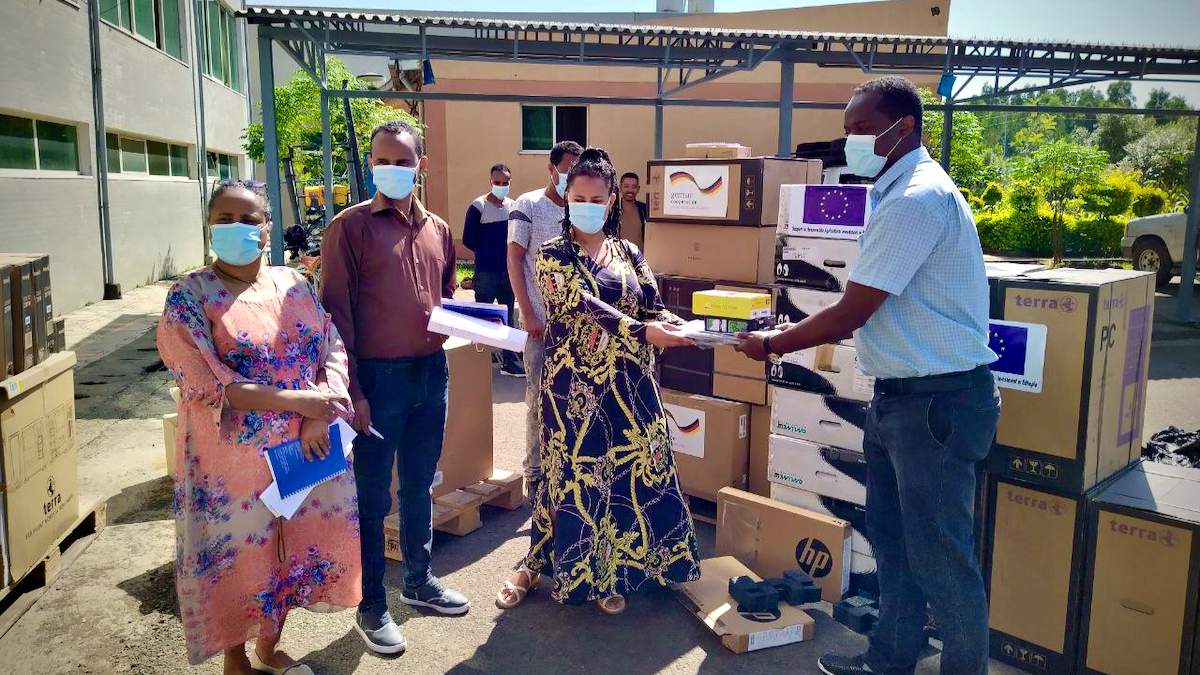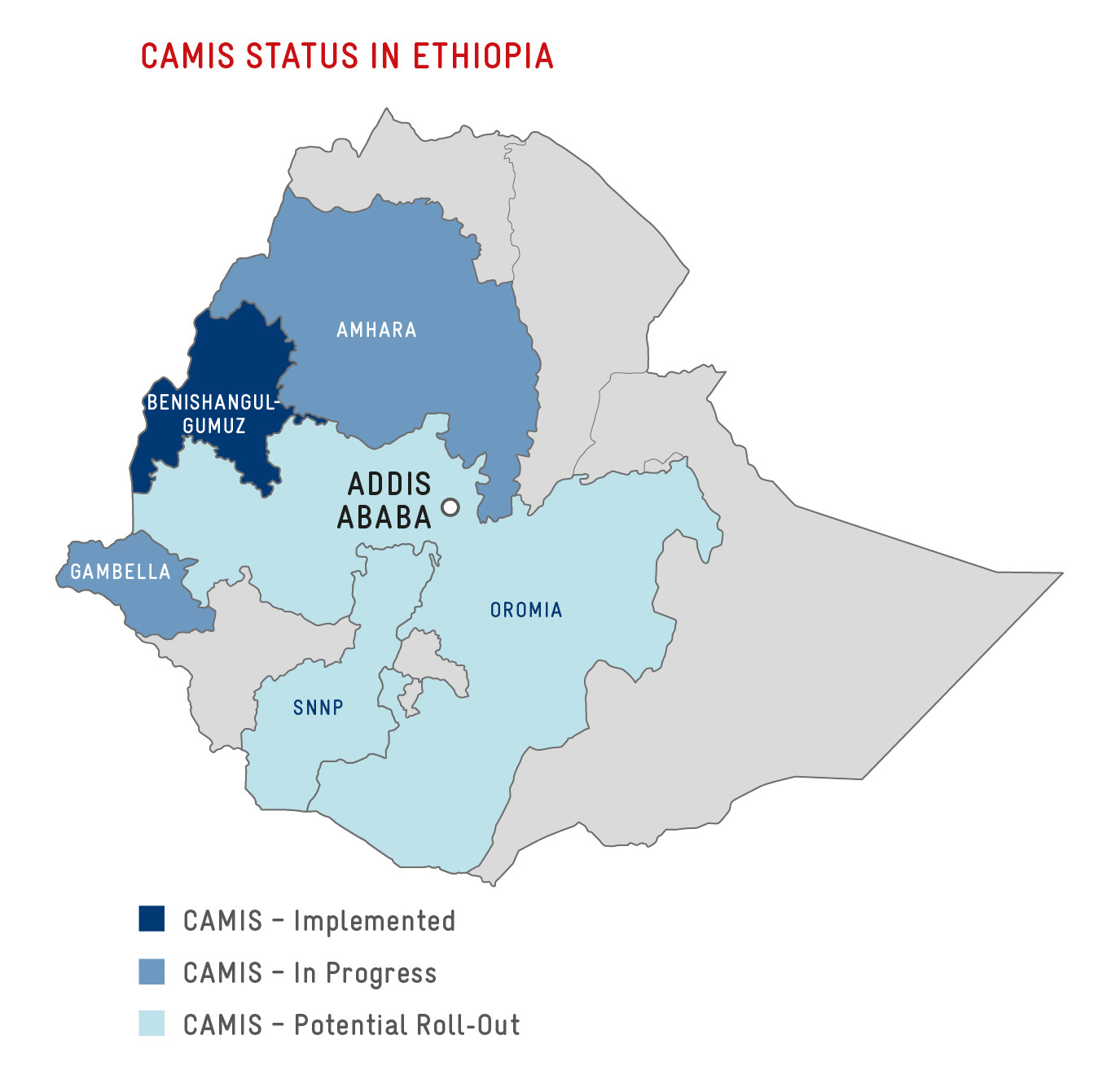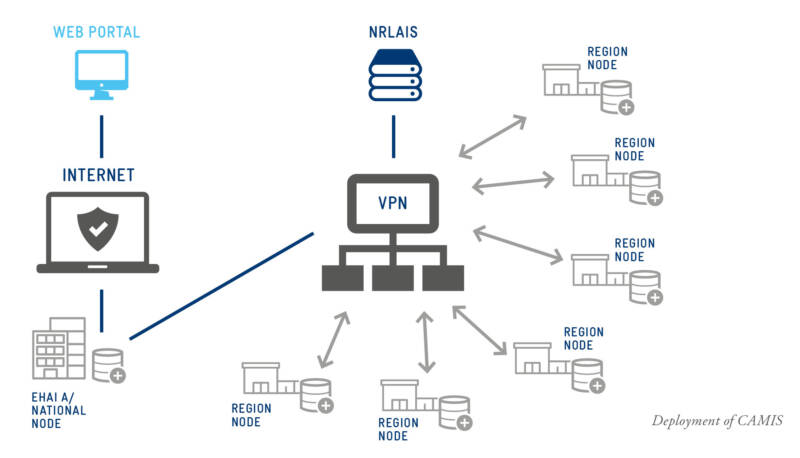A Digital Information System for Fair and Transparent Investments in Land in Ethiopia
Tackling land administration challenges, empowering regional institutions, and promoting responsible agricultural investments

Handover of CAMIS equipment⎮ Photo: © GIZ
In Ethiopia, the lack of proper documentation and mapping of land holdings and use rights has long been a challenge to effective land administration. Until recently, a systematic IT-based land information system enabling information sharing did not exist. The result is fragmented and outdated information on land holdings and agricultural investments. Unreliable land information for use by businesses and government authorities hinders commercial agricultural investments and impedes transparent land transactions.

However, with the introduction of the Commercial Agricultural Management Information System (CAMIS), developed under the Support to Responsible Agricultural Investments II project, Ethiopia is changing its land governance and paving the way for sustainable and responsible agricultural investments. The project includes the component Responsible Governance of Investments in Land which is co-financed by the EU.
The Commercial Agricultural Management Information System is a distributed information management system using free and open-source software tools for managing commercial agriculture in the country. The system is linked to the National Rural Land Administration Information System (NRLAIS), which is the cadastre system for rural land parcels. NRLAIS includes all rural land administration processes from the central ministry to the district (“woreda”) level, including mass land registration.
The Commercial Agricultural Management Information System was piloted in Benishangul-Gumuz and is currently in the process of being deployed in Amhara and Gambella. In all three regions, infrastructure installation and configuration, as well as the training of experts, have been completed.
Positive Change
The Commercial Agricultural Management Information System focuses on information management challenges and contributes substantially to these achievements:
- Empowerment of regional institutions to keep track of the performance of agricultural investment projects: as a compiled inventory of agricultural investments, the system facilitates the monitoring and evaluation of land investments and their performances.
- In addition, the Commercial Agricultural Management Information System follows up on socio-economic aspects, agricultural inputs, as well as on the land development progress and environmental management. Furthermore, it allows a periodic audit of inventories.
- Set-up of a database including all relevant information, to increase the transparency of integrated land use planning and reliable land allocation for new agricultural investments. Moreover, the information system supports decision-makers at the federal level in making well-informed and timely decisions.
- Development of harmonized national and regional commercial farming data collection templates which capture substantial data from commercial farming businesses. By providing a consistent data collection template, the Commercial Agricultural Management Information System benefits government institutions by monitoring the performance of investors and facilitates data analysis to provide valuable information to decision-makers.
- Creation of the first support structure for commercial farms to allow the responsible and sustainable development of agricultural businesses.
- Establishment of a linkage between regional and federal data centres through an existing government network for sharing land governance data and information.
A Model System for Replication
In the next step, it is planned to roll out the Commercial Agricultural Management Information System to other districts in the project regions. Furthermore, it is envisaged that the system will be replicated in Oromia and SNNP, the Southern Nations, Nationalities, and Peoples (see CAMIS status in Ethiopia).
It will be realized through close collaboration with the Ministry of Agriculture and the partners on a local level. A national set-up of the Commercial Agricultural Management Information System may consist of decentralized independent systems on the regional state level, i.e. as regional nodes.

Deployment of CAMIS
At the federal level, a central hub will pool the data from the regions. The nodes will be connected to the central hub through the existing government network, “WoredaNet” which links institutions from the federal level with the woreda level through a VPN (Virtual Private Network).
Despite the fact that CAMIS has been specifically designed and produced for the Ethiopian context, it has the potential to serve as a model system for replication in other countries, considering the following major requirements:
- Well-equipped IT infrastructure such as data centres, servers, networking facilities and desktop computers which can be used as a solid and sustainable basis for developing a data management system.
- Accessibility of investors’ profiles and business plans to obtain accurate data, which amongst other purposes, facilitates the establishment of baselines for monitoring and evaluation purposes.
- Availability of experts who may be trained within the first phase of the project implementations.
About the Support to Responsible Agricultural Investments II project
Contact
Christian Mesmer

